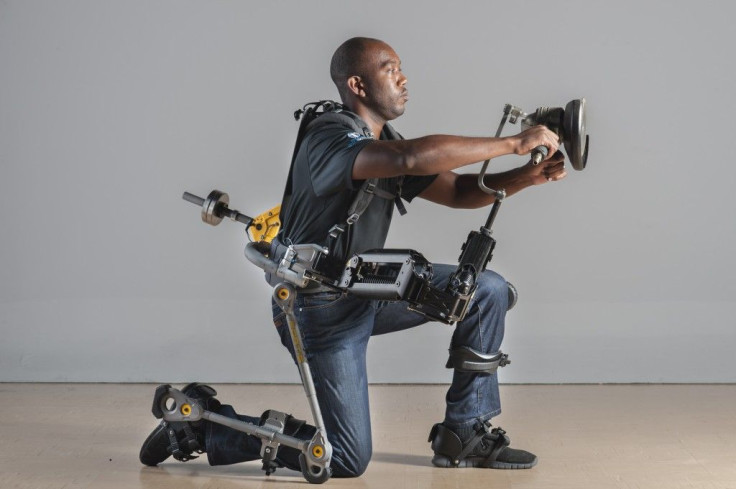Industrial Exoskeletons? Lockheed Martin Has Orders From The US Navy To Help With Ship Maintenance

It's not the industrial exoskeleton loader donned by monster-fighting spaceship Capt. Ellen Ripley in the 1986 film “Aliens 2,” but it serves a similar function: to provide some super-human load-bearing capabilities to maintenance crews. And the U.S. Navy just ordered two of them for testing.
Lockheed Martin Corporation (NYSE:LMT) said Monday its lightweight, unpowered wearable FORTIS exoskeleton could be used in operating heavy grinders, riveters and sandblasters, providing workers greater endurance and strength by absorbing the weight of tools used in the hard task of repairing and cleaning vessels over long shifts.
“Those tools take a toll on operators due to the tools’ weight and the tight areas where they are sometimes used,” Adam Miller, a company director of new initiatives, said. “By wearing the FORTIS exoskeleton, operators can hold the weight of those heavy tools for extended periods of time with reduced fatigue.” Details of the contract were not released, including the sale price.
Bethesda, Maryland-based Lockheed Martin has been working on exoskeletons for military and industrial use since 2009, most recently through Commercial Technology and Maintenance Activities, a joint program between the National Center for Manufacturing Sciences and the Department of Defense to develop advanced weapons systems readiness and sustainability technologies.
The U.S. Army has been testing a so-called Tactical Assault Light Operator Suit, or TALOS, an advanced armor that would offer many of the features seen in sci-fi flicks, like transmittable real-time vital-signs monitoring and in-helmet heads-up displays of combat situations. But for the time being, it looks like the first military applications of exoskeletons will be for the more mundane maintenance activities that keep U.S. naval vessels afloat.
© Copyright IBTimes 2024. All rights reserved.






















